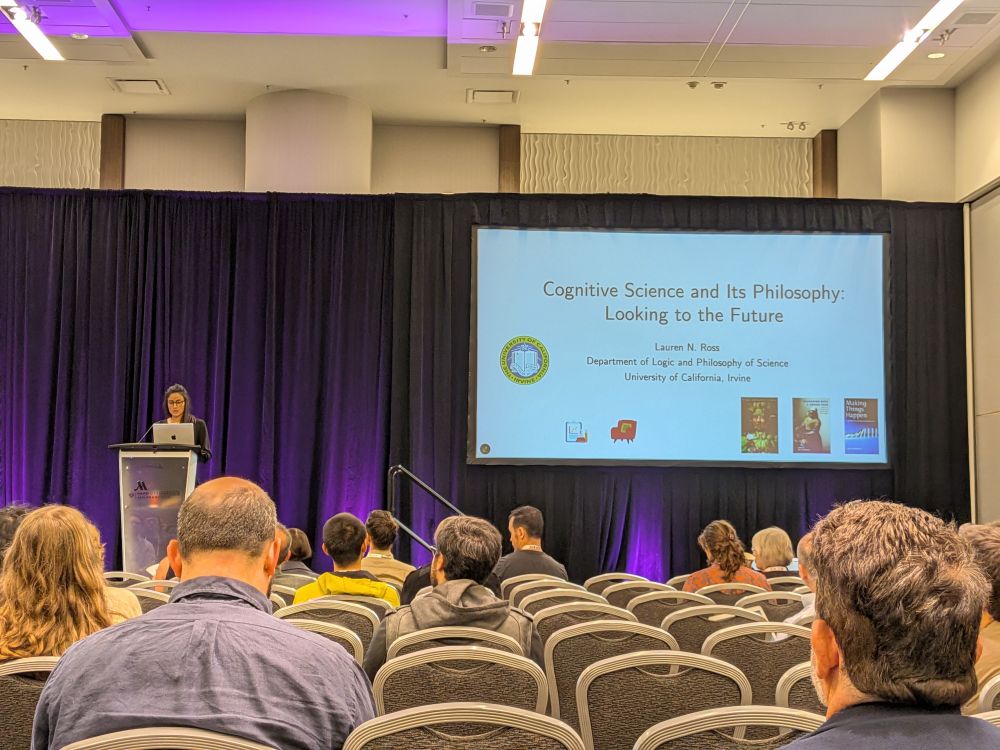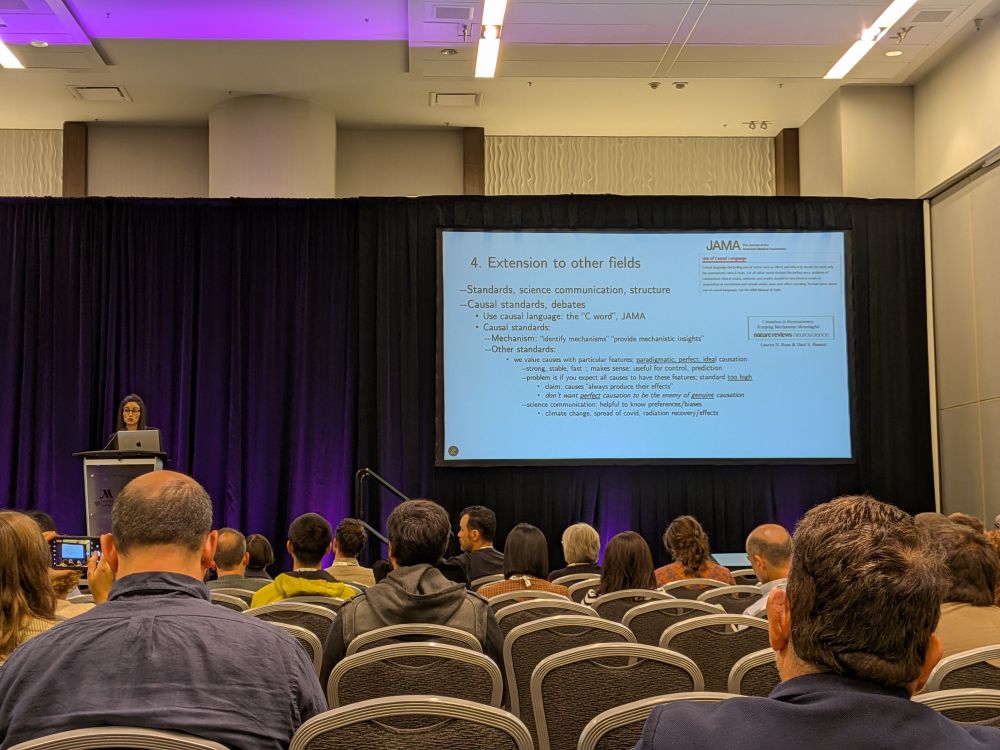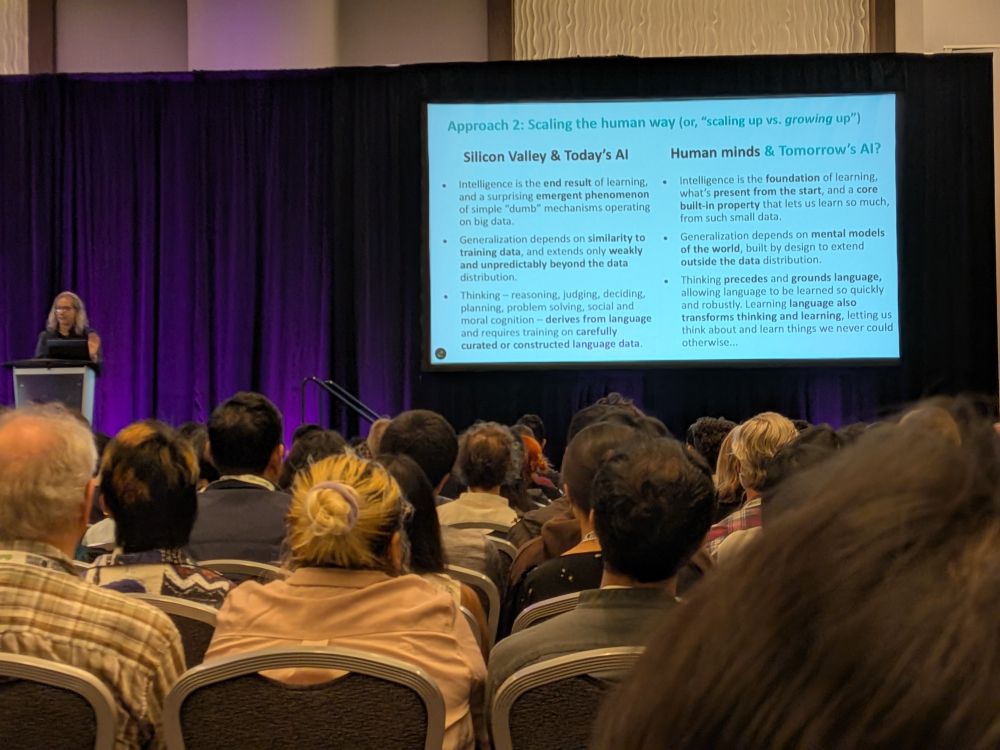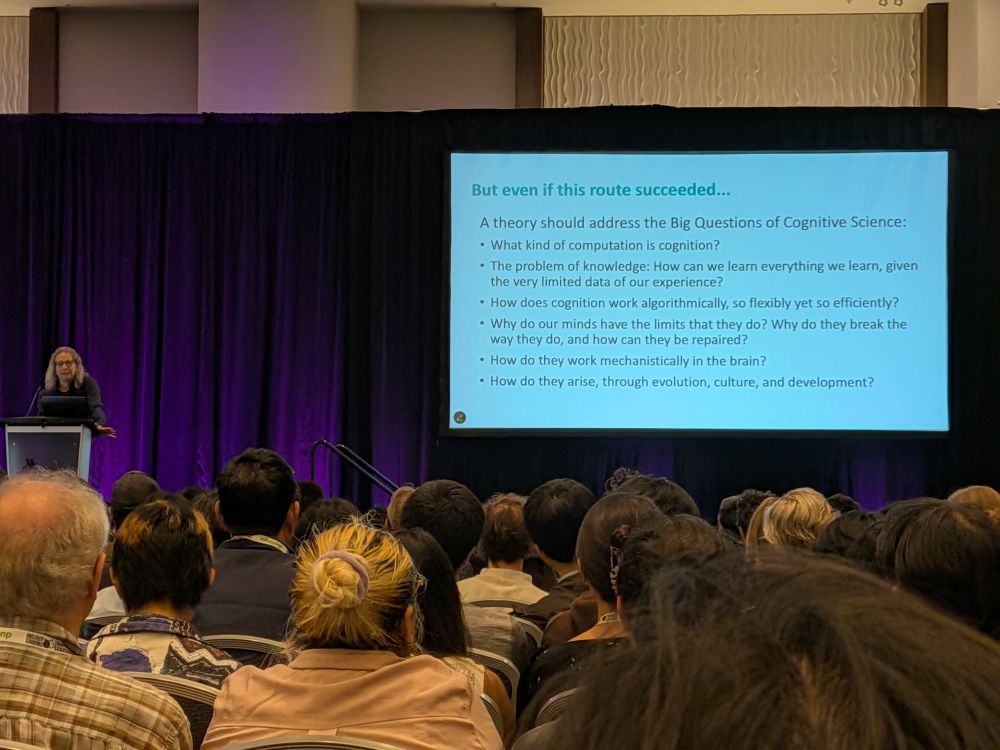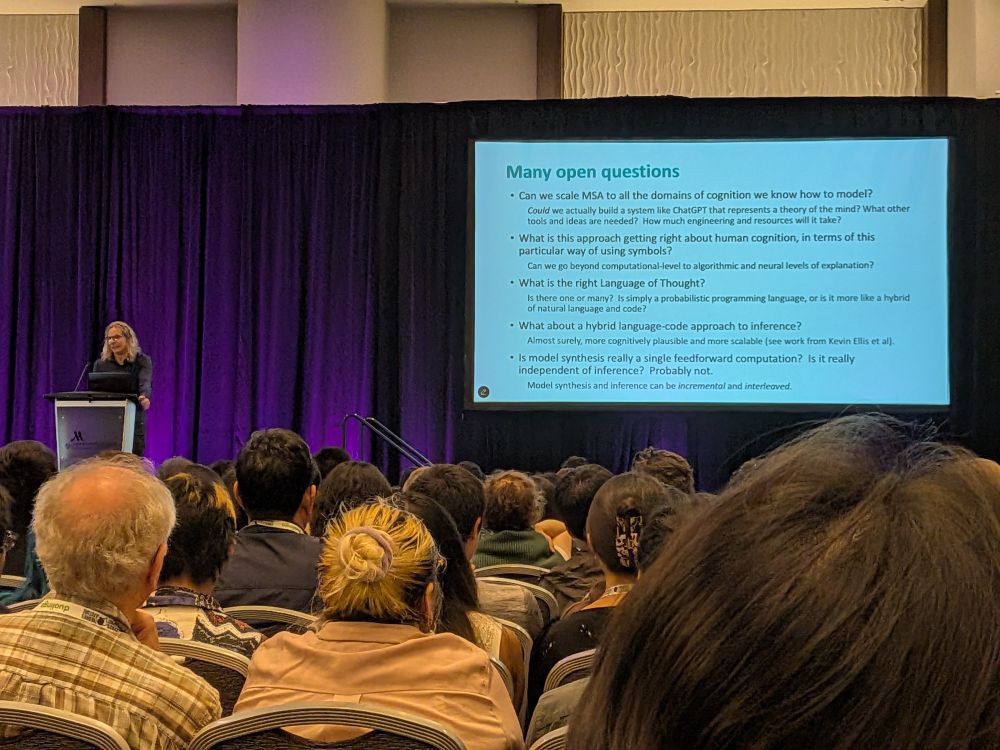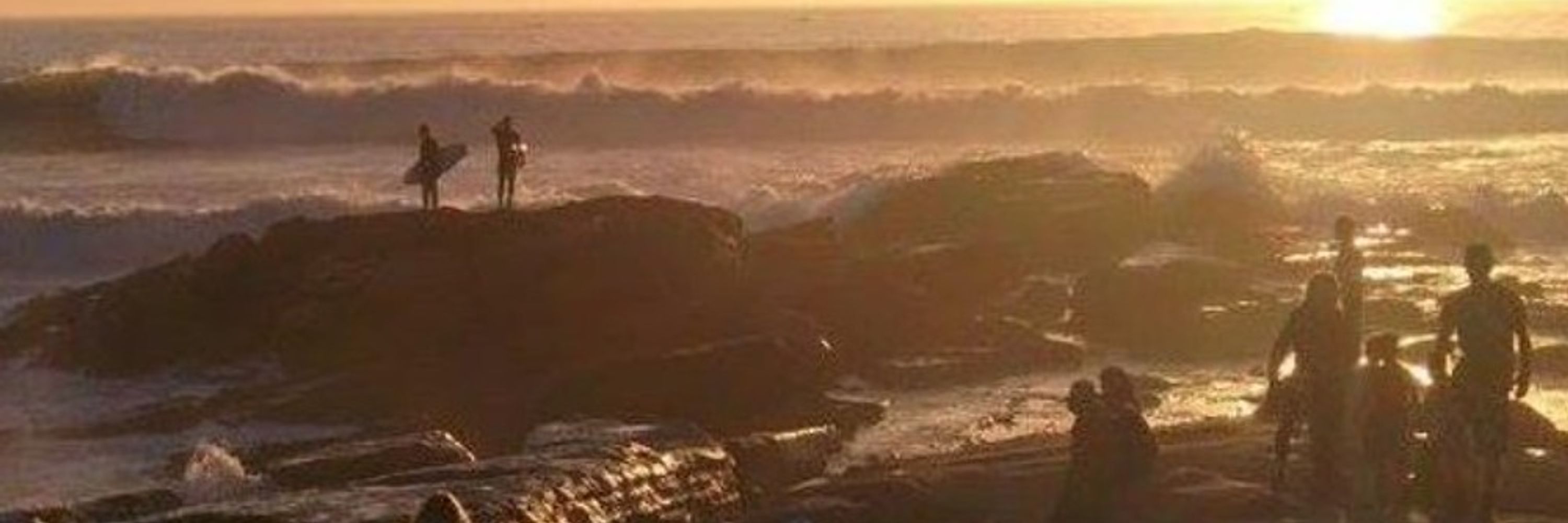
my lab will develop scalable models/theories of human behavior, focused on memory and perception
currently recruiting PhD students in psychology, neuroscience, & computer science!
reach out if you're interested 😊


my lab will develop scalable models/theories of human behavior, focused on memory and perception
currently recruiting PhD students in psychology, neuroscience, & computer science!
reach out if you're interested 😊
"Physics versus graphics as an organizing dichotomy in cognition"
www.cell.com/trends/cogni...



"Physics versus graphics as an organizing dichotomy in cognition"
www.cell.com/trends/cogni...
Try it here: v0-new-project-9b5vt6k9ugb.vercel.app

Try it here: v0-new-project-9b5vt6k9ugb.vercel.app
He presented a beautiful set of studies that suggest that many 4-year-old children have a minimal concept of possibility: they simulate only once and treat the outcome as a fact. 🎱⬅️➡️🤔💭💡

He presented a beautiful set of studies that suggest that many 4-year-old children have a minimal concept of possibility: they simulate only once and treat the outcome as a fact. 🎱⬅️➡️🤔💭💡
How do people's mental models shape memory, prediction, and generalization? We find that people spontaneously construct goal-dependent causal abstractions that compress experience to privilege relevant information.
📃 osf.io/preprints/ps...
🔗 github.com/cicl-stanfor...

How do people's mental models shape memory, prediction, and generalization? We find that people spontaneously construct goal-dependent causal abstractions that compress experience to privilege relevant information.
📃 osf.io/preprints/ps...
🔗 github.com/cicl-stanfor...
We are a supportive team who happened to wear bluesky appropriate colors for the lab photo (this wasn't planned). 💙
Lab info: cicl.stanford.edu
Application details: psychology.stanford.edu/admissions/p...

We are a supportive team who happened to wear bluesky appropriate colors for the lab photo (this wasn't planned). 💙
Lab info: cicl.stanford.edu
Application details: psychology.stanford.edu/admissions/p...
"Non-commitment in mental imagery is distinct from perceptual inattention, and supports hierarchical scene construction"
(by Li, Hammond, & me)
link: doi.org/10.31234/osf...
-- the title's a bit of a mouthful, but the nice thing is that it's a pretty decent summary


"Non-commitment in mental imagery is distinct from perceptual inattention, and supports hierarchical scene construction"
(by Li, Hammond, & me)
link: doi.org/10.31234/osf...
-- the title's a bit of a mouthful, but the nice thing is that it's a pretty decent summary

In one super cool study, he shows how children become more diligent fact checkers in less reliable environments.
📃 orticio.com/assets/Ortic...

In one super cool study, he shows how children become more diligent fact checkers in less reliable environments.
📃 orticio.com/assets/Ortic...

📢New from: @yangxiang.bsky.social @gershbrain.bsky.social @tobigerstenberg.bsky.social
www.sciencedirect.com/science/arti...

📢New from: @yangxiang.bsky.social @gershbrain.bsky.social @tobigerstenberg.bsky.social
www.sciencedirect.com/science/arti...
📃 authors.elsevier.com/a/1lo8f2Hx2-...
📃 authors.elsevier.com/a/1lo8f2Hx2-...
We examine how people figure out what happened by combining visual and auditory evidence through mental simulation.
Paper: osf.io/preprints/ps...
Code: github.com/cicl-stanfor...

We examine how people figure out what happened by combining visual and auditory evidence through mental simulation.
Paper: osf.io/preprints/ps...
Code: github.com/cicl-stanfor...
I very much enjoyed chatting with @dyamins.bsky.social about the connections between world models and counterfactual simulation.
I very much enjoyed chatting with @dyamins.bsky.social about the connections between world models and counterfactual simulation.
Join us to work at the intersection of cognitive science and AI applied to pressing societal challenges like climate change.
More info about me: rachit-dubey.github.io
My lab: ucla-cocopol.github.io
Please help repost/spread the word!

Join us to work at the intersection of cognitive science and AI applied to pressing societal challenges like climate change.
More info about me: rachit-dubey.github.io
My lab: ucla-cocopol.github.io
Please help repost/spread the word!
🧠 Looking for insight on applying to PhD programs in psychology?
✨ Apply by Sep 25th to Stanford Psychology's 9th annual Paths to a Psychology PhD info-session/workshop to have all of your questions answered!
📝 Application: tinyurl.com/pathstophd2025

🧠 Looking for insight on applying to PhD programs in psychology?
✨ Apply by Sep 25th to Stanford Psychology's 9th annual Paths to a Psychology PhD info-session/workshop to have all of your questions answered!
📝 Application: tinyurl.com/pathstophd2025
In @currentbiology.bsky.social, @chazfirestone.bsky.social & I show how these images—known as “visual anagrams”—can help solve a longstanding problem in cognitive science. bit.ly/45BVnCZ
In @currentbiology.bsky.social, @chazfirestone.bsky.social & I show how these images—known as “visual anagrams”—can help solve a longstanding problem in cognitive science. bit.ly/45BVnCZ
We look for patterns. But what are the limits of this ability?
In our new paper at CCN 2025 (@cogcompneuro.bsky.social), we explore the computational constraints of human pattern recognition using the classic game of Rock, Paper, Scissors 🗿📄✂️

We look for patterns. But what are the limits of this ability?
In our new paper at CCN 2025 (@cogcompneuro.bsky.social), we explore the computational constraints of human pattern recognition using the classic game of Rock, Paper, Scissors 🗿📄✂️
with @joshtenenbaum.bsky.social & @rebeccasaxe.bsky.social
Punishment, even when intended to teach norms and change minds for the good, may backfire.
Our computational cognitive model explains why!
Paper: tinyurl.com/yc7fs4x7
News: tinyurl.com/3h3446wu
🧵
with @joshtenenbaum.bsky.social & @rebeccasaxe.bsky.social
Punishment, even when intended to teach norms and change minds for the good, may backfire.
Our computational cognitive model explains why!
Paper: tinyurl.com/yc7fs4x7
News: tinyurl.com/3h3446wu
🧵
